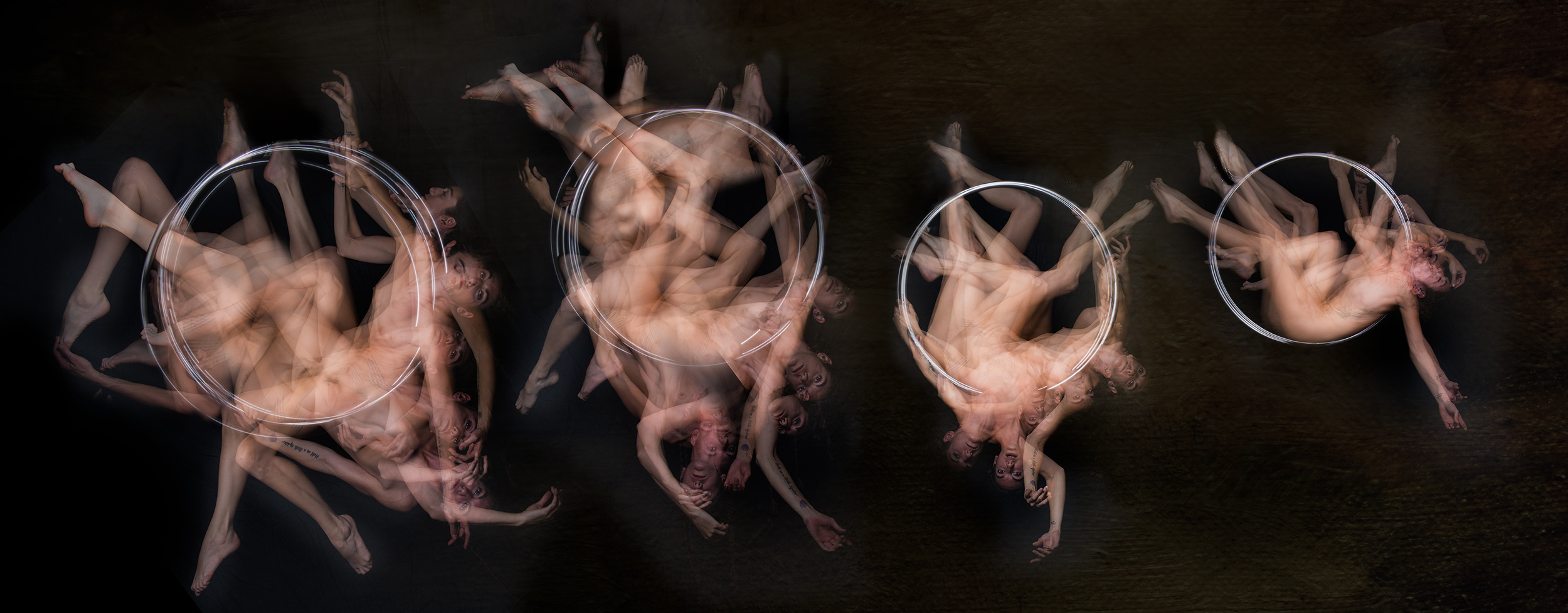Please describe this work. These are in-camera multiple exposures, created in collaboration with a model or models, where the challenge of the image is to use the movement of the human body as captured and combined to create an external shape that moves beyond a single corporeal reference.
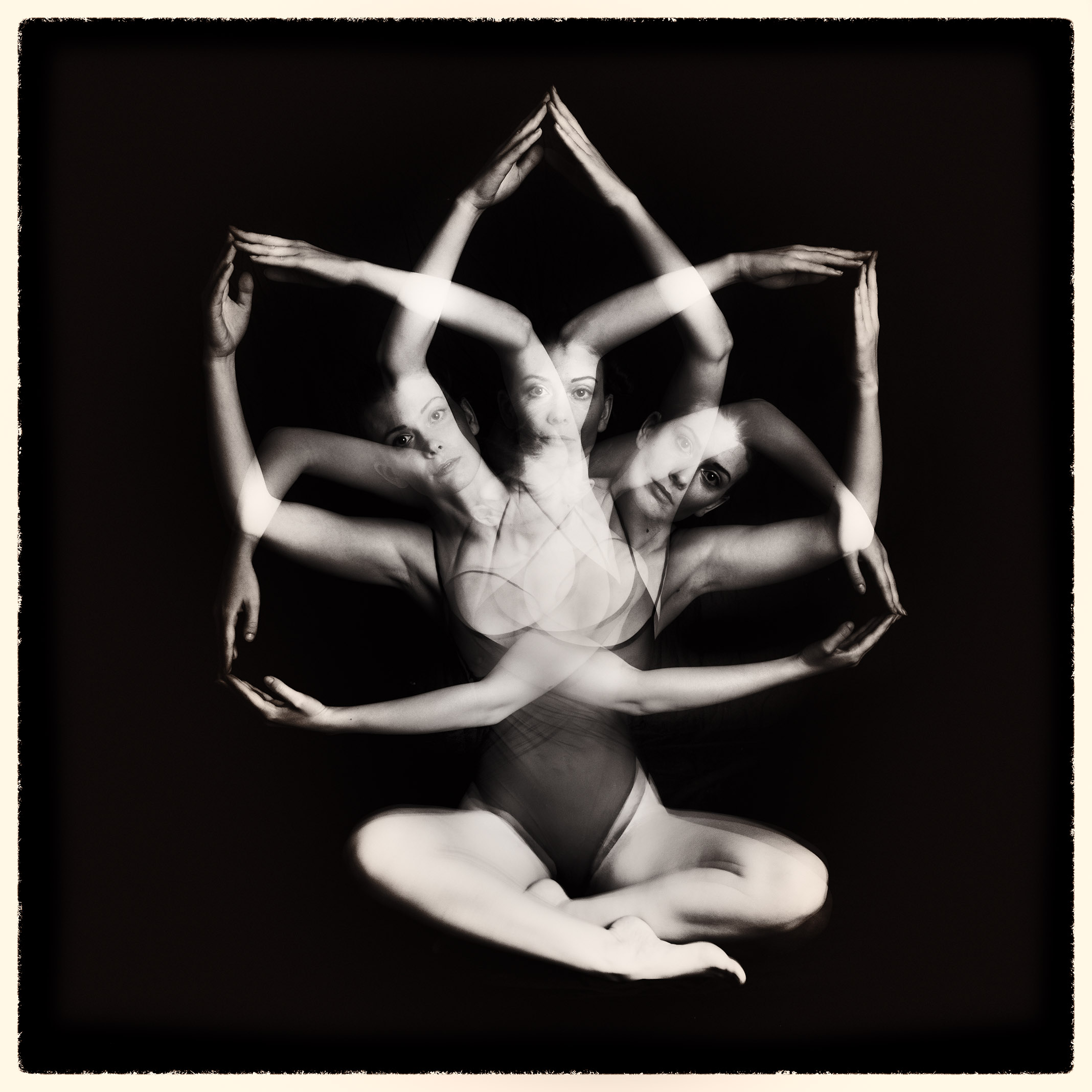
What got you interested in this style of image making? From the very beginning of photography, one of the key creative challenges has been how to render motion. From a technical standpoint, Eadweard Muybridge captured his horse in motion, and by the mid-twentieth century even a speeding bullet could be captured and rendered as if motionless.
So more light-sensitive capture mediums (faster films or higher ISOs), high-speed strobes, and camera shutters capable of accurately opening for very short periods of time solved the technical problems inherent in motion capture. But the real issue, which is how motion should be creatively rendered to create interesting images, was never even posed as a question.
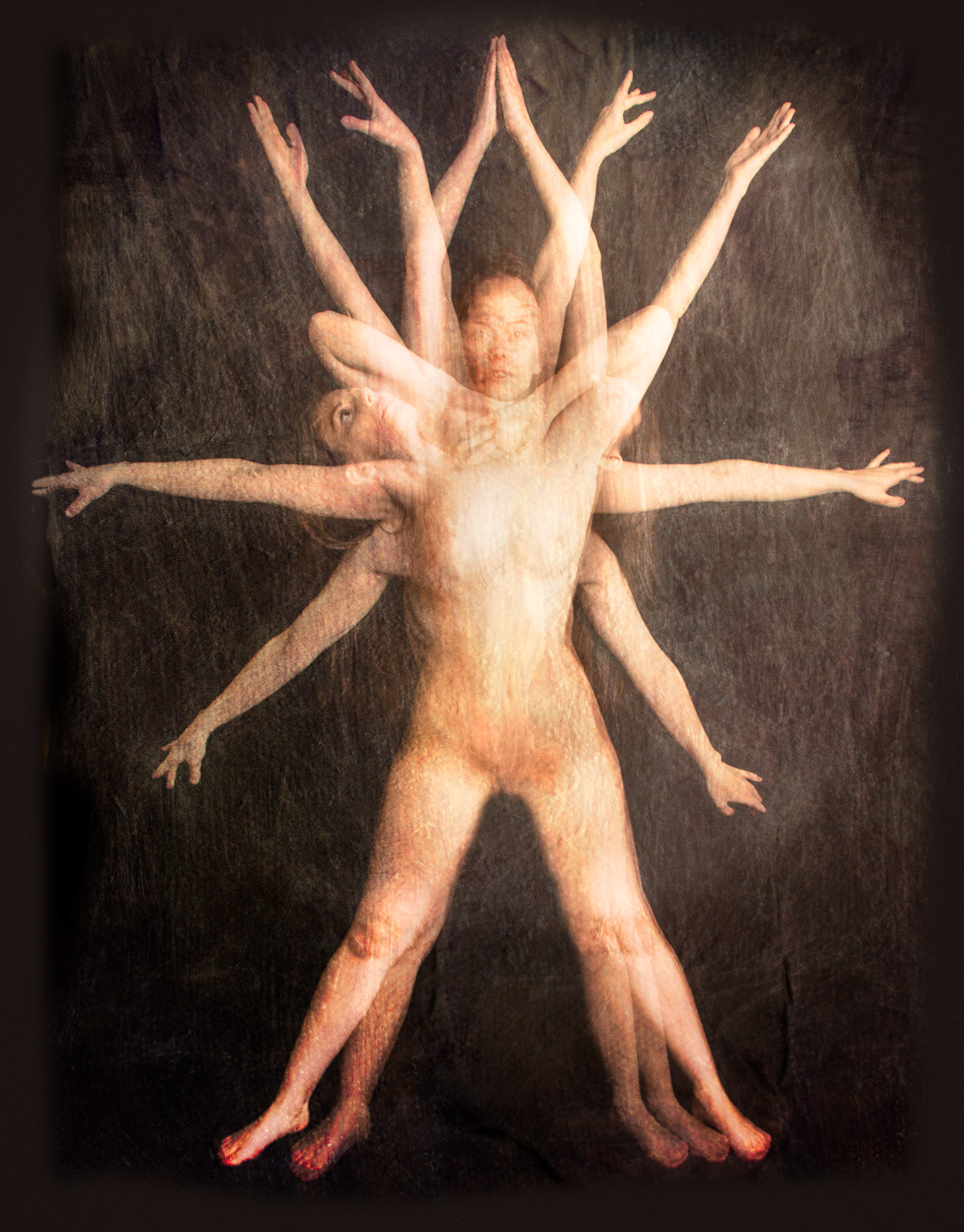
I decided to use high-speed studio strobe equipment as a capture medium to see what happens when the human form is used as a paint brush. Essentially, I wanted to experiment with using a model as the medium to draw a shape using motion, rather than to focus on the corporeal presence of the model.
Of course, the shape “drawn” by the model involves some of the specifics of the model such as her hair, her eyes, and even what she might be wearing. But the overall idea is to go beyond these mundane realities, and use the true creative potential of photography to point to the artistic, spiritual, and ineffable.
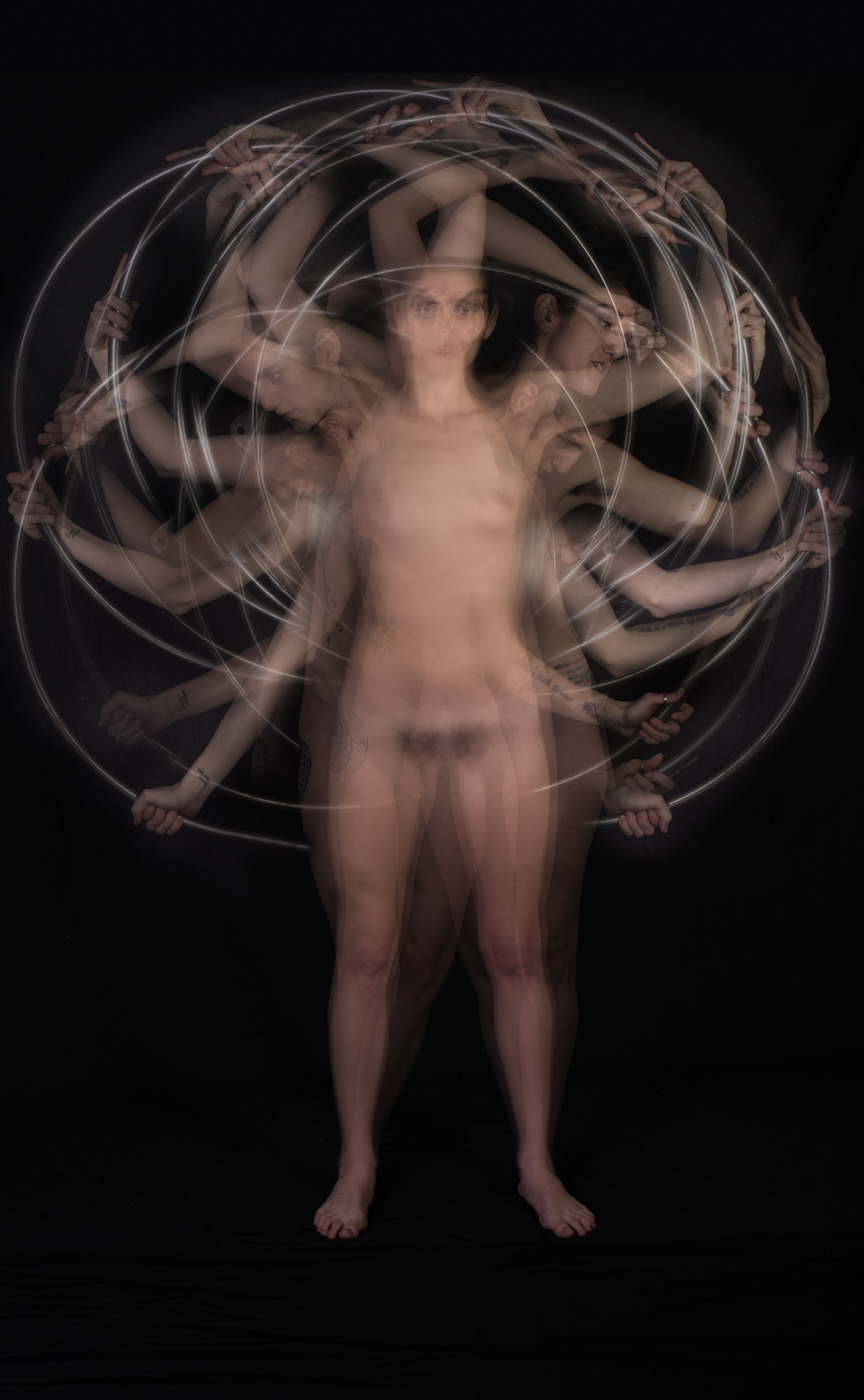
What is the process of creating these images like? As a technique, the in-camera multiple exposure has its roots in the film era, with notable examples including the surrealistic imagery of Man Ray and others. The digital era has to a great extent eclipsed the use of the multiple exposure, but this forgotten and important element of our photographic heritage can be used to make images that are difficult—or impossible—to create in post-production alone.
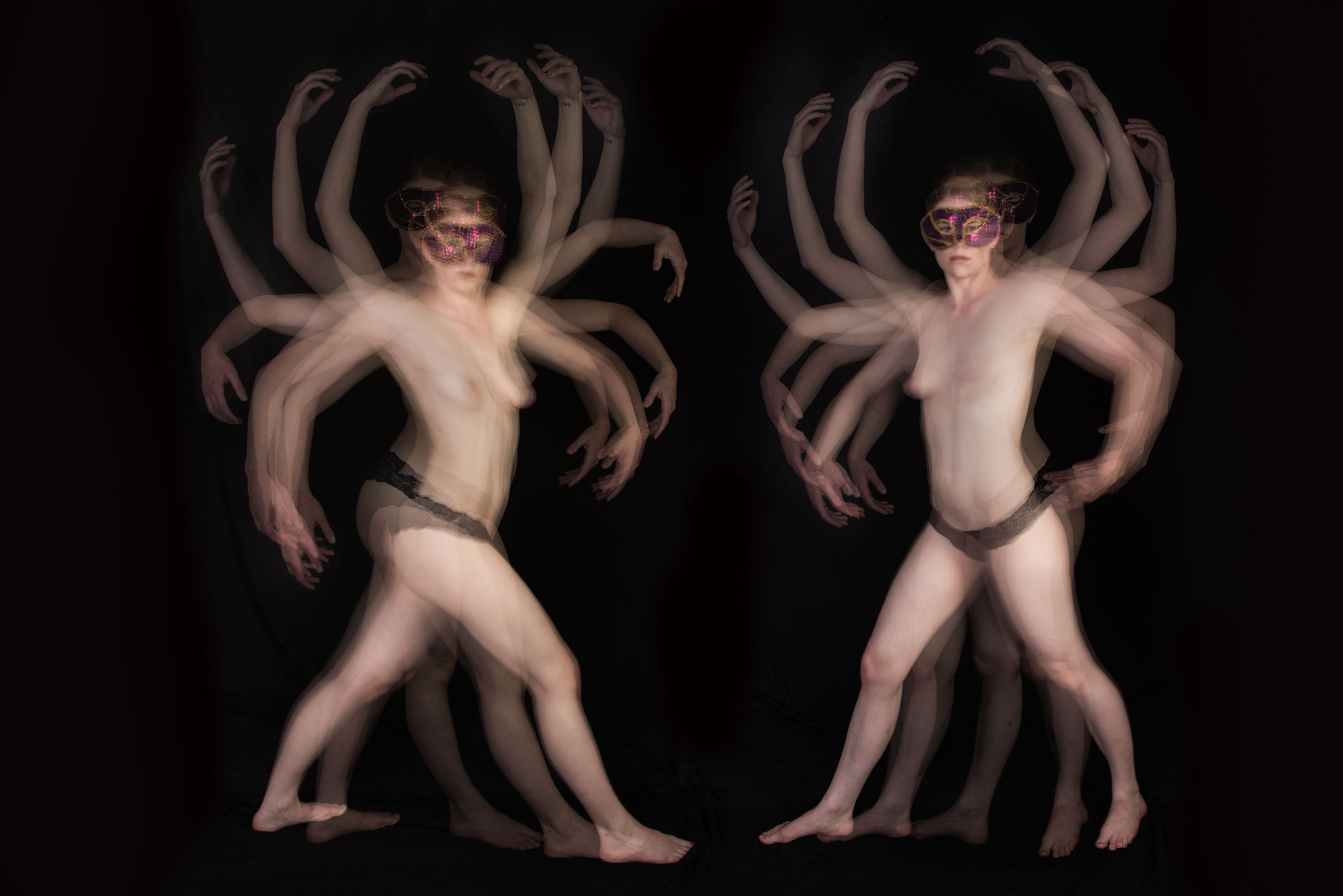
Working with a model, the process is both choreographic and collaborative. The model and I agree on the shape that is to be created using the individual components of the multiple exposure, and establish marks. We discuss how many separate exposures will comprise the final multiple exposure, and how these exposures will be “called out.”
The model then takes each position in turn, and with a great deal of bidirectional communication I fire the strobes and camera on a dark background as we count the exposures.
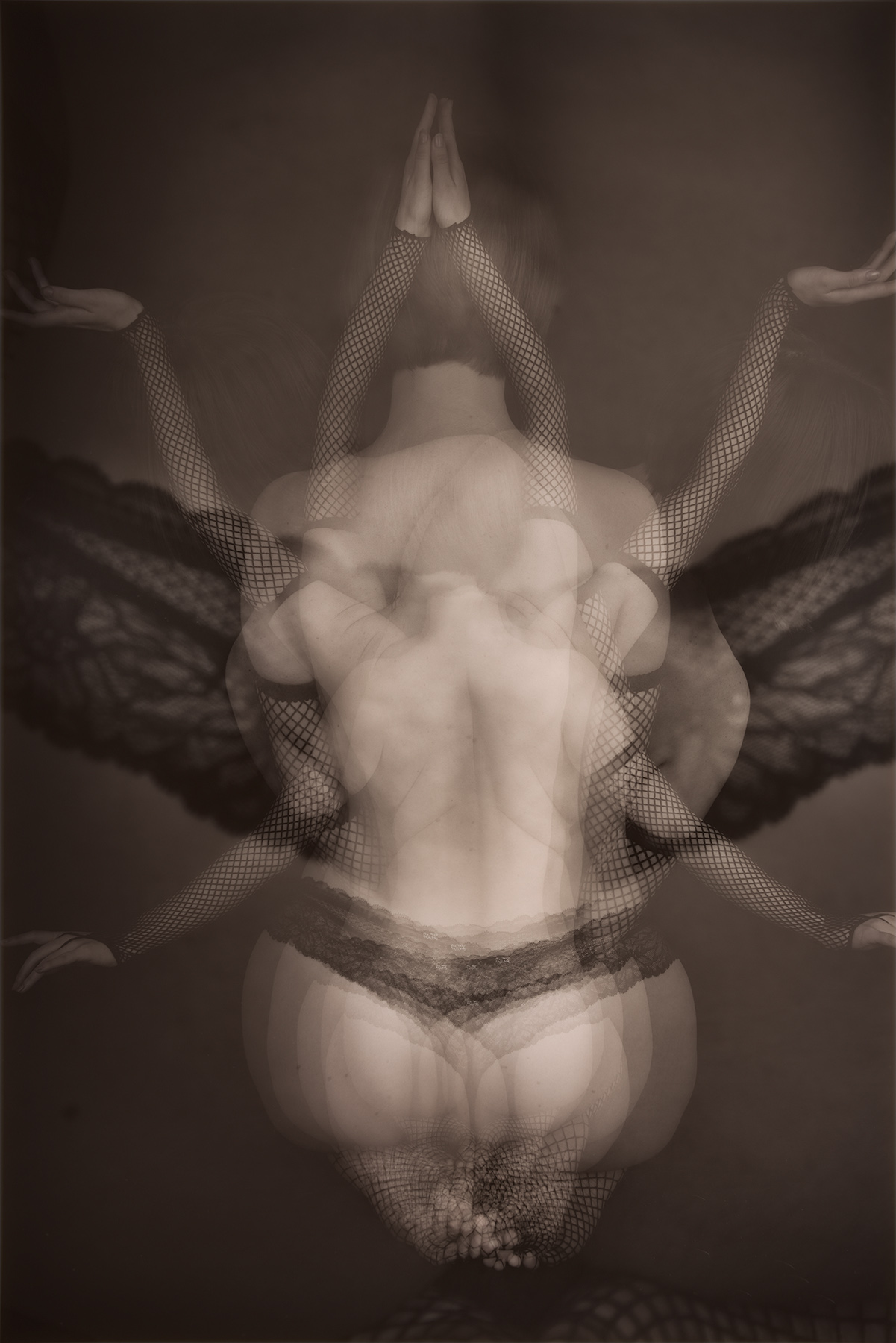
Generally, lighting is fairly simple two-strobe setup, designed to cast an even, fairly soft light through the sequence of poses.
I have created successful imagery using between two and nine component exposures, with the bulk of the images using between five and eight. For some imagery, an even number of exposures has advantages in terms of the overall shape created, since the human body is, after all, symmetrical.
Generally, the imagery that looks more “organized” is with my camera on a tripod, but I have also taken it off the tripod and used it hand-held, and even experimented with using a variety of focal lengths in the individual captures.
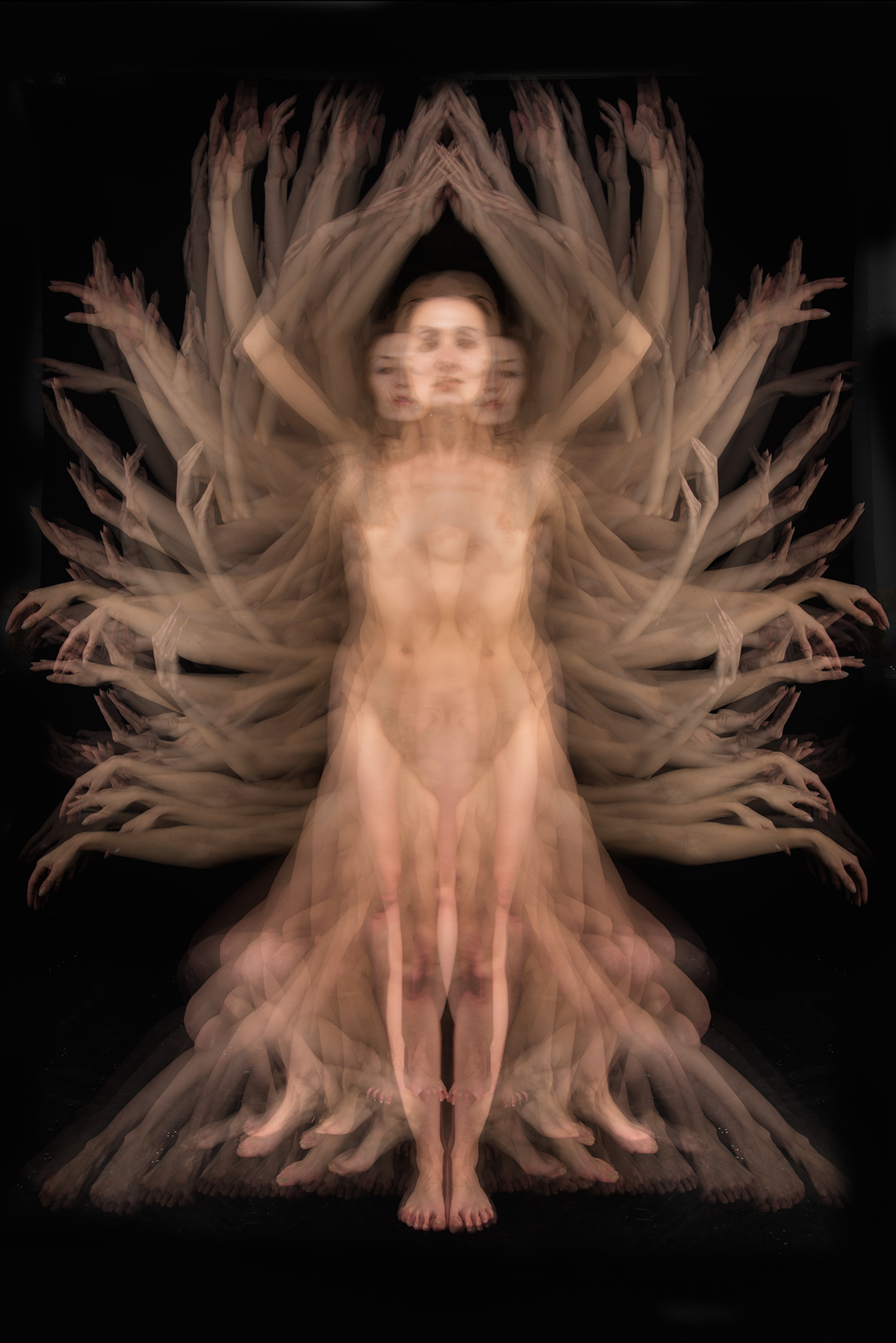
How do you find models? The models I work with are paid professionals (although they may have other jobs besides modeling). They probably would describe themselves more as “glamour” models than fashion or lifestyle, and are used to cameras, studio lighting, and working naked or scantily clad. Many of these models have contacted me when they are coming through the Bay area, or I’ve found them through a local modeling group. They usually have a presence on the Model Mayhem website, and also an Instagram following.
My experience is that these images come out best when the model has a background and training in movement and dance.
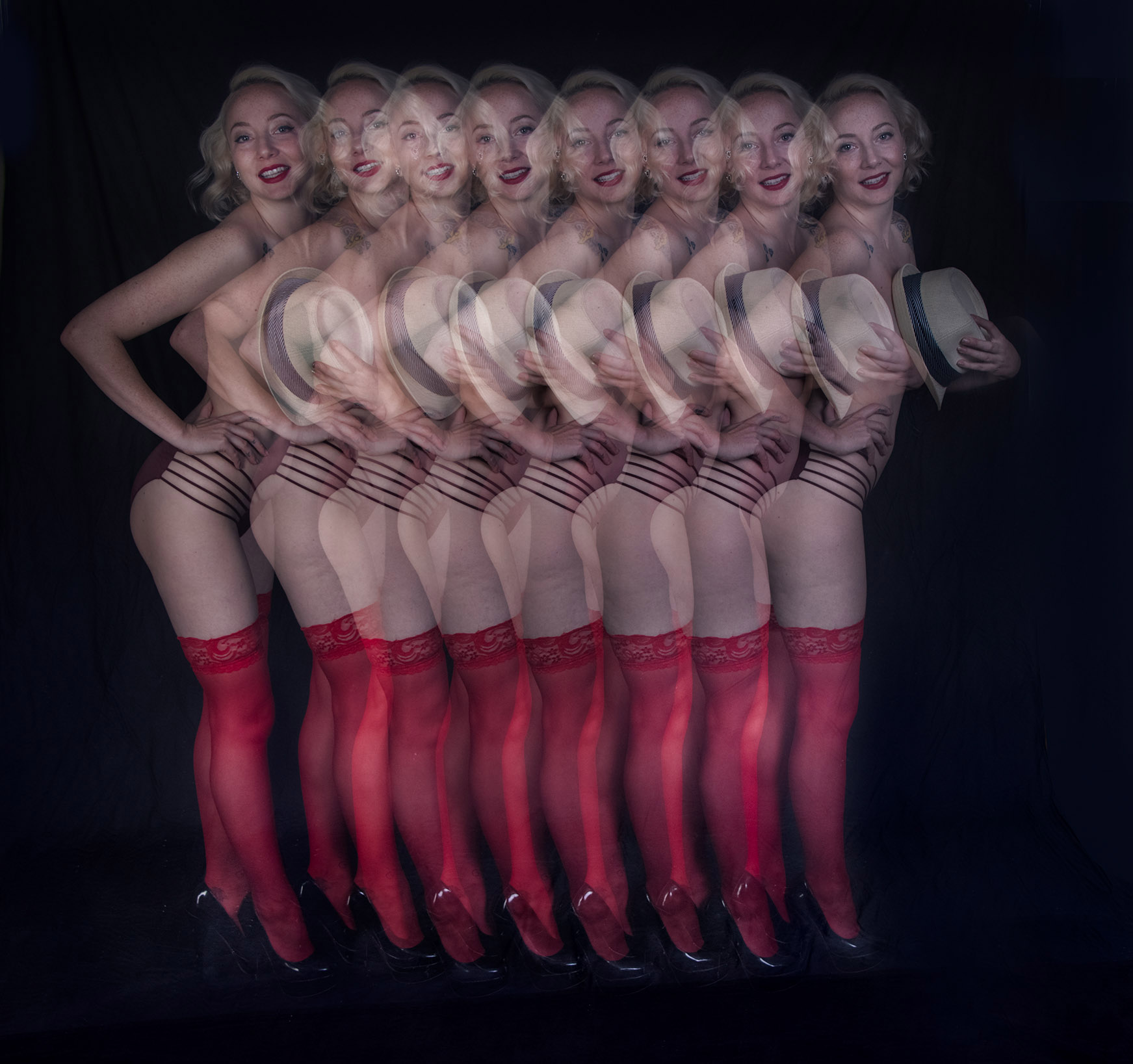
Why don’t you use Photoshop to create these images instead of creating them in your camera? I do like Photoshop, and do generally use it in much of my work. But I’ve found that creating these images in-camera works better than trying to construct them in post-production from individual photos. For one thing, having an in-camera rendition gives me and my model a visual reference for how well the image is progressing while it is still a work-in-progress.
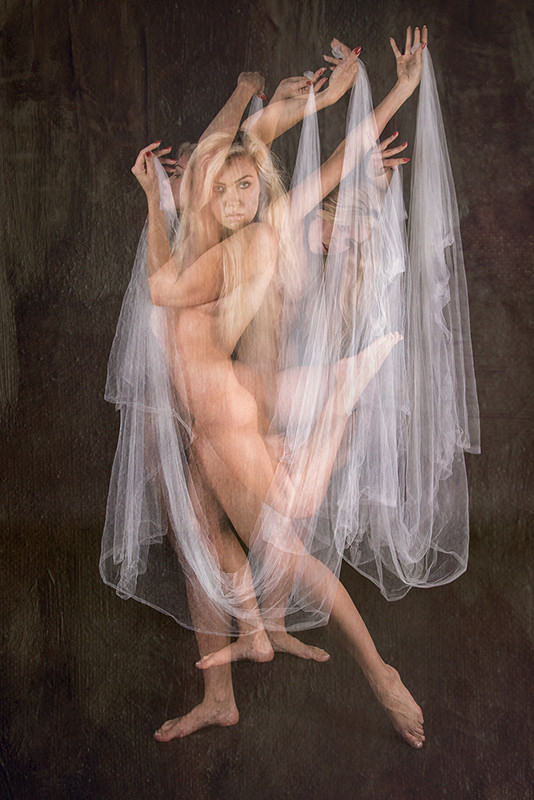
Where does the iconography you reference in these images come from? Some of my original thinking when I began this work was to reference relevant historical art using the medium of the in-camera multiple exposure, hence Rodin (Gates after Rodin), Picasso (Les Desmoiselles), and Marcel Duchamp (Nude Descending a Ladder). But as I went along I became more interested in creating entirely new elements of the life force. In some sessions this was romantic and sexual, in others the insect kingdom intruded.
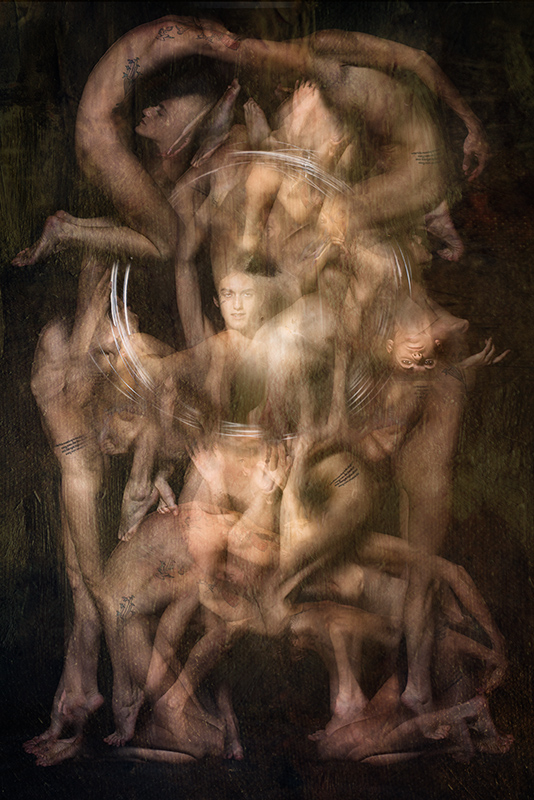
Finally, as in all things philosophic, the religious made its appearance—with the odd sexual theater that is part-and-parcel of Western culture (e.g., Chorus of One and Fedora) and then to add an overlay of theology (e.g., Priestess), followed by references to an as-yet-unnamed theology that owes something to Hinduism and Greek mythology (for example, Avatar and Hekatonkheires), and something to the hope that each of us can recognize the light within each other (e.g., Devotional Pose and Vitruvian Woman).
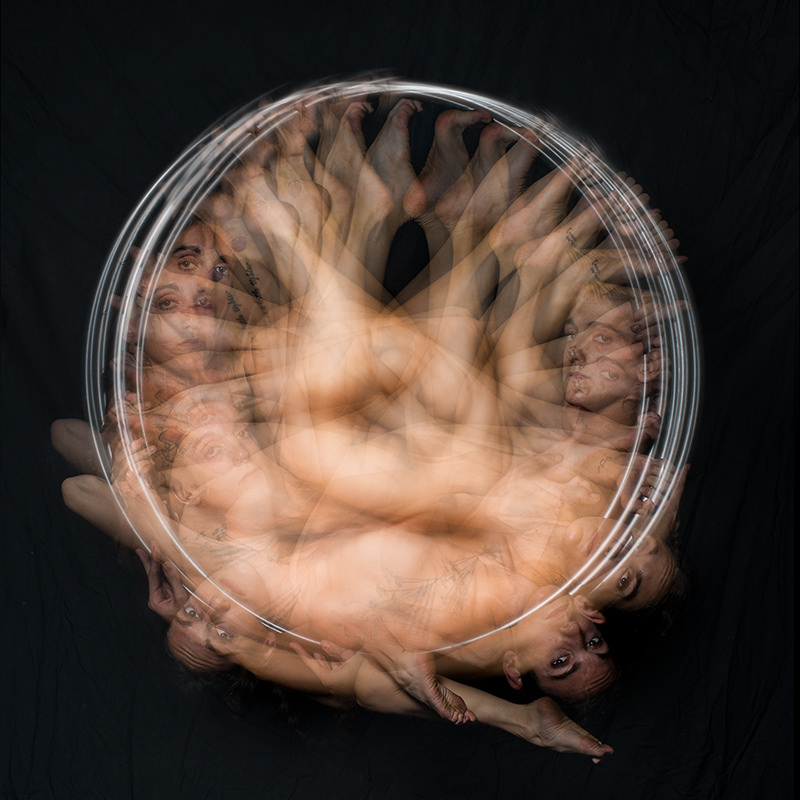
Where can I see more of your Multiple Exposures imagery? Please check out my online Multiple Exposures gallery and the Multiple Exposures category on my blog.
